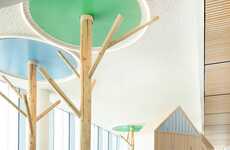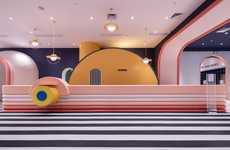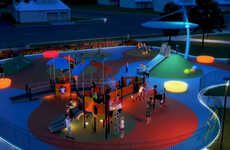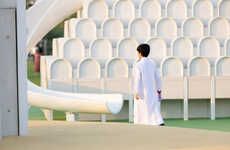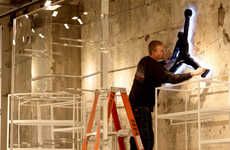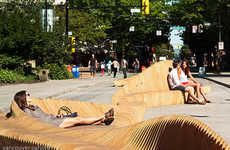
The National Arboretum Playground Fosters Love and Appreciation of Trees
Meghan Young — July 5, 2013 — Art & Design
References: tcl.net.au & contemporist
The National Arboretum Playground plays with children's imaginations in an organic way. Taking on the shape of giant acorns, it will make them feel as though they took a magic potion that made them smaller as if in Wonderland. Or perhaps they will pretend to have entered a forest of giants. Either way, the acorns dwarf their already small bodies in an adventurous way.
Designed by Taylor Cullity Lethlean (TCL), the National Arboretum Playground is located in Australia. Challenging the conventional idea of play environments, it was inspired by the Arboretum’s 100 forests of rare and endangered trees from around the world. According to the designers, it was "designed to creatively engage children with the beauty of trees and foster life-long connections to the remarkable surrounding environment."
Designed by Taylor Cullity Lethlean (TCL), the National Arboretum Playground is located in Australia. Challenging the conventional idea of play environments, it was inspired by the Arboretum’s 100 forests of rare and endangered trees from around the world. According to the designers, it was "designed to creatively engage children with the beauty of trees and foster life-long connections to the remarkable surrounding environment."
Trend Themes
1. Nature-inspired Playgrounds - Designing playgrounds that are inspired by nature, such as acorn-shaped jungle gyms, can create immersive and imaginative play experiences for children.
2. Environmental Education Through Play - Integrating educational elements into playgrounds, like showcasing rare and endangered trees, can help foster a love for nature and the environment in children.
3. Challenging Conventional Play Environments - Creating unique and unconventional play spaces can encourage creativity and adventurous play for children.
Industry Implications
1. Playground Equipment Manufacturing - Manufacturers can explore innovative designs like acorn-shaped jungle gyms to create engaging and nature-inspired playground equipment.
2. Education and Environmental Conservation - Educational institutions and environmental organizations can incorporate nature-themed playgrounds as a way to educate children about the importance of conservation.
3. Tourism and Recreation - Tourism and recreation organizations can use unique and unconventional playground designs to attract visitors and enhance their experience in natural settings.
3
Score
Popularity
Activity
Freshness


